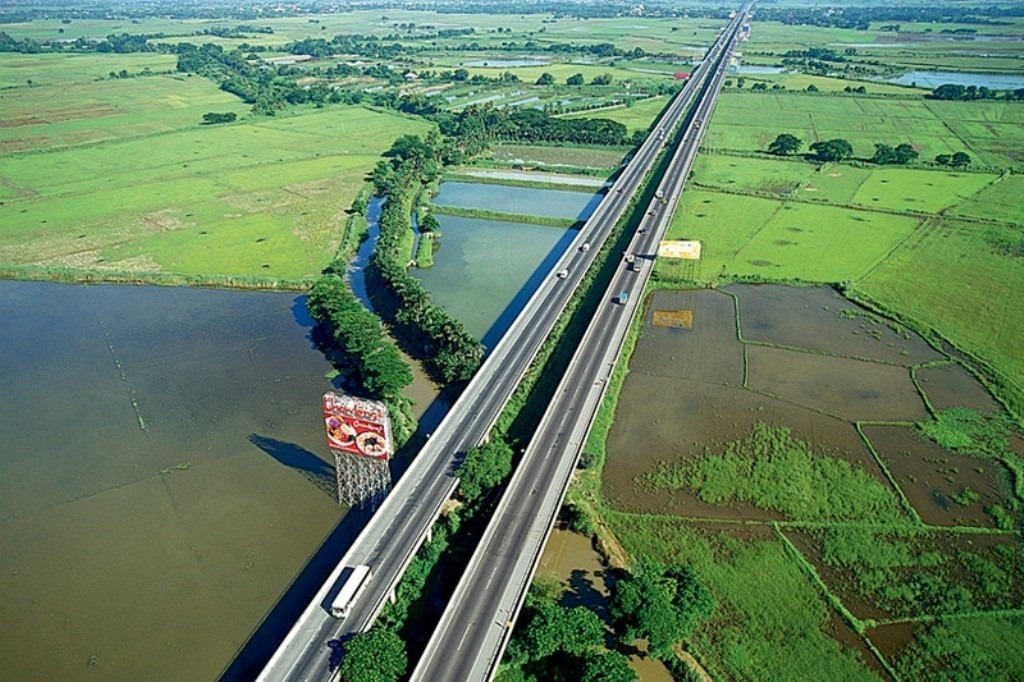
WITH the ongoing major safety upgrade of the Candaba Viaduct, AMH Philippines, the engineering consultant of NLEX Corporation, further highlights the urgency of the repairs and the need to restrict the weight of vehicles plying the southbound viaduct, citing aging and continuous heavy loads as among the factors affecting the current condition of the structure.
A University of the Philippines engineering company, AMH reported that it has been assisting NLEX since 2019 in monitoring and assessing the condition of the Candaba Viaduct and explained that aging, fatigue, and continuous heavy loads cause the observed structural defects.
“The first factor is aging. Just like people, aged structures lose their strength over time. Also, subjecting the bridge to heavy loads more than what the bridge was designed for is causing continuous cyclical fatigue stress. Fatigue makes the structure weak and if it continues, its health deteriorates. Here in the Philippines, the usual fatigue life of bridges is 50-60 years, and the Viaduct is nearing that mark,” said Roy Luna, director of AMH Philippines.
Luna stressed that upon reassessment in June 2022, using structural models, their team found out that trucks using the southbound viaduct should be a maximum of 10 wheels and must not exceed a gross vehicle weight of 33 tons. He also said that repairs should be done immediately so that the damage will not manifest or transfer in other areas of the bridge.
Taking the engineering studies into high consideration and putting premium on safety, the NLEX Corporation has engaged its various stakeholders both in the public and private sectors regarding the planned rerouting of trucks with 12 wheels or more.
“It has been our practice to conduct briefings and consultation meetings for our national and local government partners, customers in different industries, and host communities whenever we implement big projects like this so we can inform them on what’s going on and address any concern that they may have,” said NLEX Corporation President and General Manager J. Luigi L. Bautista.
Bautista said that the NLEX management acknowledges and understands the concerns raised by truckers and local leaders that the rerouting will affect business operations and cause traffic congestion on local roads.
“While our truckers, who serve as lifeline maintaining supply chains, play a key role in the economy, the rerouting plan aims to balance the interests of the economy and public safety given the urgency and need to repair the structure,” emphasized Bautista, adding that “NLEX remains committed to addressing the plight of various stakeholders and assures to continue pursuing discussions with relevant national government agencies.”
Among the stakeholders that were given briefings were the Department of Public Works and Highways (DPWH), Department of Transportation-Toll Regulatory Board (DOTr-TRB), Pampanga Chamber of Commerce and Industry (Pamcham), Clark Development Corporation (CDC), Subic Bay Metropolitan Authority (SBMA), Philippine Constructors Association (PCA), Confederation of Truckers Association of the Philippines (CTAP), Inland Haulers and Truckers Association (INHTA), Alliance of Concerned Truck Owners and Organizations (ACTOO), and Haulers and Truckers Association in the Watersouth (HATAW).
Concerned local government units (LGUs) that were part of the roadshow included Apalit, San Simon, Mexico, Arayat, Sta. Ana, Magalang, Minalin, Mabalacat, San Fernando, and Angeles in Pampanga; Calumpit, Balagtas, San Miguel, Pulilan, and Guiguinto in Bulacan; Cabiao and Gapan in Nueva Ecija; and Concepcion in Tarlac.
NLEX officials also met with the governor of Pampanga and notified the governors of the provinces of Bulacan, Nueva Ecija and LGU leaders in Bamban, Tarlac; San Isidro, Nueva Ecija; and San Ildefonso and San Rafael, Bulacan.
Aside from explaining the current upgrade during meetings, the management likewise mentioned to its stakeholders that it is expediting the construction of a third viaduct which is expected to be completed by the fourth quarter of 20224.
To better preserve the serviceability of the viaduct and ensure overall public safety, Bautista said NLEX will intensify its drive against overloaded vehicles.
The tollway company has been strictly enforcing the Republic Act No. 8794, the law prescribing the load limits.
The anti-overloading program aims to safeguard motorists by not allowing overloaded trucks and trailers from entering the expressways or by asking them to go to nearest exit as extra load may affect vehicle control.
Meanwhile, Governor Dennis “Delta” Pineda gathered some officials from the North Luzon Expressway (NLEx) Corporation, Land Transportation Office (LTO), Department of Public Works and Highways (DPWH), Pampanga Chamber of Commerce (PAMCHAM), quarry operators, truckers ‘associations, and other stakeholders to discuss some issues regarding the implementation of the rerouting plan on trucks with 12 or more wheels, and weighing in excess of 33 tons.
This is after the NLEX Corp. released an advisory deviating such trucks from their roads beginning 11th July.
Pineda requested that the implementation of the rerouting plan be temporarily postponed while he is still in communicating with the national government.
“Bigyan po muna nila ng linaw, hindi po puwedeng walang papasukin na truck sa NLEx, especially trailers, tapos padadaanin nila sa maliliit na daan sa probinsya, it will cause problem sa economy po. Kung magpapatupad po ng kung ano ang dapat na timbang, mas mabuti kung ang mismong national government ang mag-anunsyo para alam ng lahat na tataas ang presyo ng goods,” said Pineda.
The governor wants the DPWH and the Department of Transportation (DOTr) to assist in determining the appropriate weight limit that needs to be implemented.
“Lahat ng pasok from 0 to 33 tons, puwedeng-puwede naman pong dumaan at kakayanin naman ng Southbound. Except kapag excessive na or beyond thirty-three tons, do’n lang po tayo magda-divert para maiwasan ang pagkagiba ng daan at masiguro ang kaligtasan ng mga motorista,” JJ Go, Vice President NLEx Corp. Asset Management Division.
Earlier Guiguinto, Bulacan Mayor Ambrosio “Boy” Cruz Jr. said that soon he will hold a dialogue with haulers and truckers, particularly those passing through Manila North Road (MacArthur Highway) for a plan of strict implementation of the anti-overloading truck law to resolve the long-standing headaches of motorists and commuters regarding dilapidated roads on national highways caused by overloaded trucks.
Cruz also spoke with district engineer Henry Alcantara of the Bulacan First Engineering Office and discussed the measures to be taken on the implementation of the Republic Act 8794, or the “Anti Overloading Law.”
DE Alcanatara said if implemented particularly in Bulacan, it will affects the towns of Bocaue, Guiguinto, Balagtas, Malolos and Calumpit in the Manila North Road and in Plaridel and Baliwag along the Cagayan Valley Road, or the former Donya Remedios Trinidad Road.
He said each truck must not weigh more than 30 metric tons.
It was also learned that overloaded trucks passing through the Manila North Road are the perennial problem of Bulacan DPWH First DEO.
Alcantara appealed to the local government units to assist the DPWH (Department of Public Works and Highways) in implementing the anti-overloading scheme.





